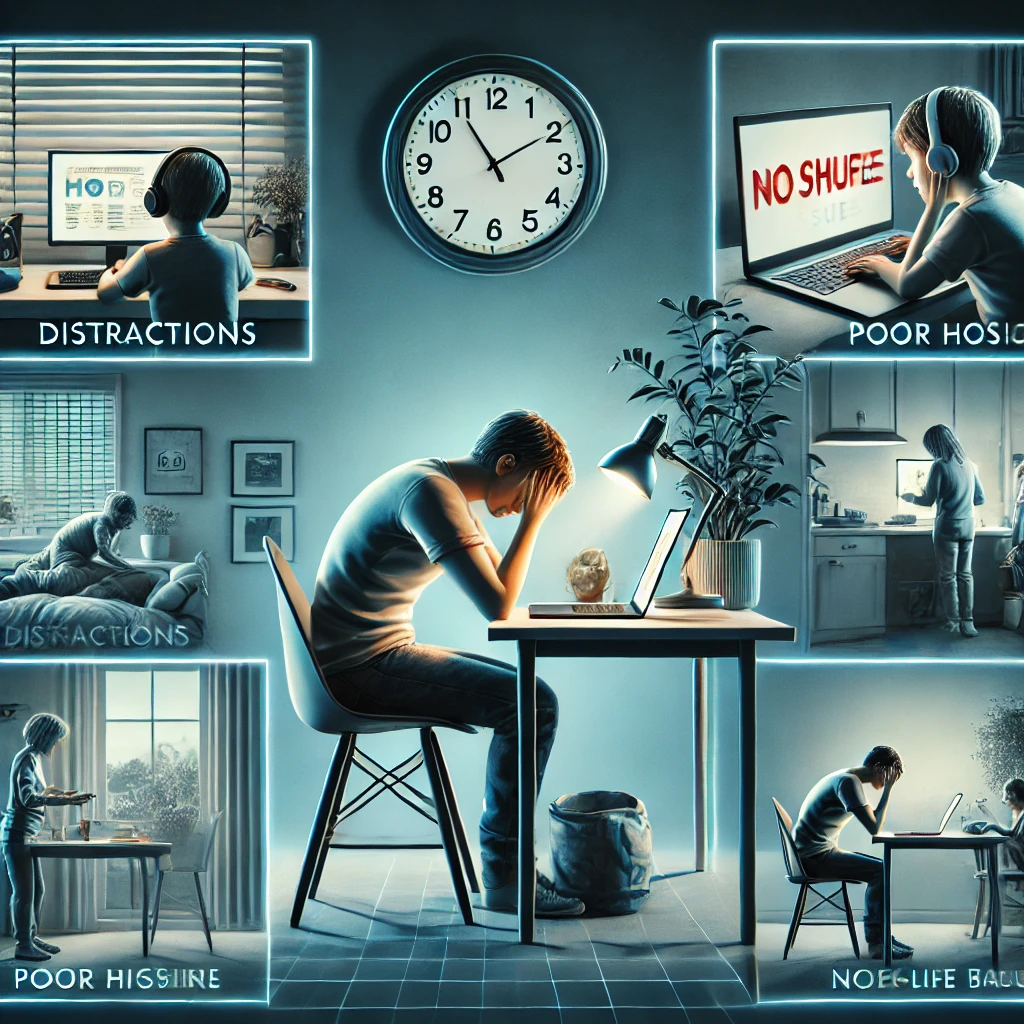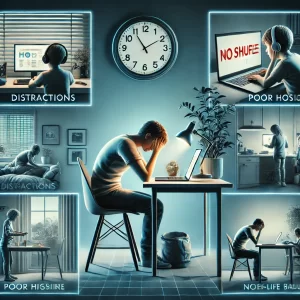Working from home has many benefits, but it also comes with challenges. Here are five common problems remote workers face:
- Distractions & Lack of Focus
- Household chores, family members, pets, and even TV or social media can interfere with productivity.
- Without a structured office environment, it’s easy to lose focus.
- Feeling Isolated & Lonely
- Working alone can lead to a lack of social interaction, making some people feel lonely and disconnected.
- There’s less opportunity for casual conversations or networking with colleagues.
- Difficulty Setting Boundaries
- Work and personal life can blend together, making it hard to “switch off” after work hours.
- Family members may not respect work time, leading to interruptions.
- Overworking & Burnout
- Without a clear separation between work and home life, people often work longer hours.
- The pressure to always be available can lead to exhaustion and stress.
- Technology & Communication Issues
- Poor internet connections, software glitches, or hardware issues can disrupt workflow.
- Miscommunication can occur due to reliance on emails, messages, and virtual meetings instead of face-to-face interaction.
Do not worry, working from home is still an excellent IDEA.
Here are solutions to overcome the common challenges of working from home:
1. Overcoming Distractions & Lack of Focus




2. Combating Isolation & Loneliness




3. Setting Clear Work-Life Boundaries




4. Preventing Overworking & Burnout




5. Handling Technology & Communication Issues












